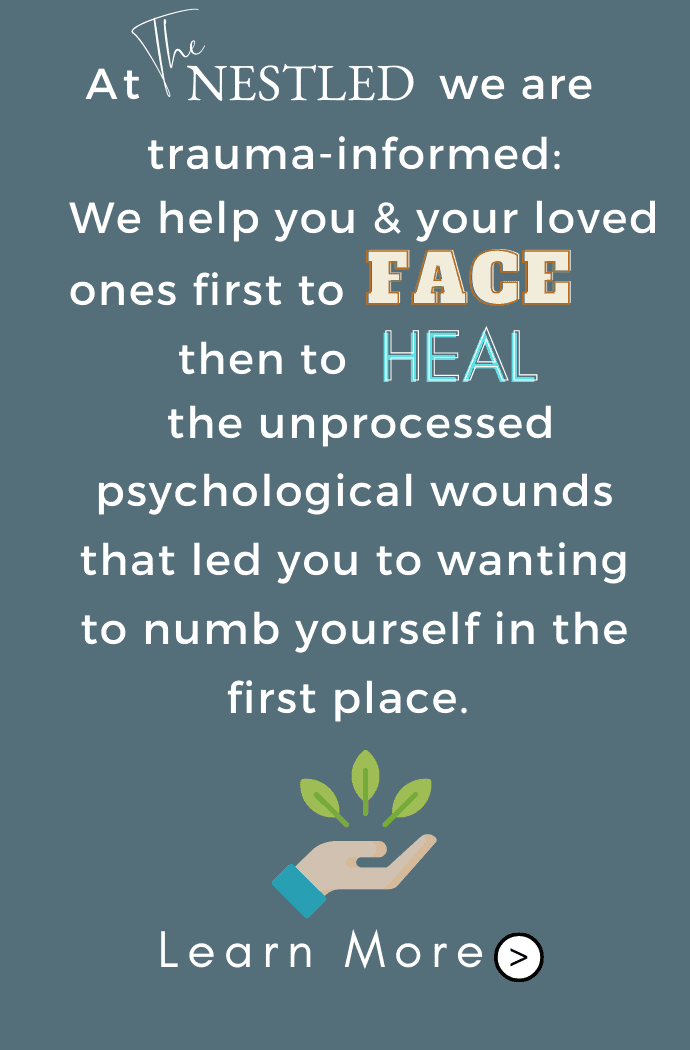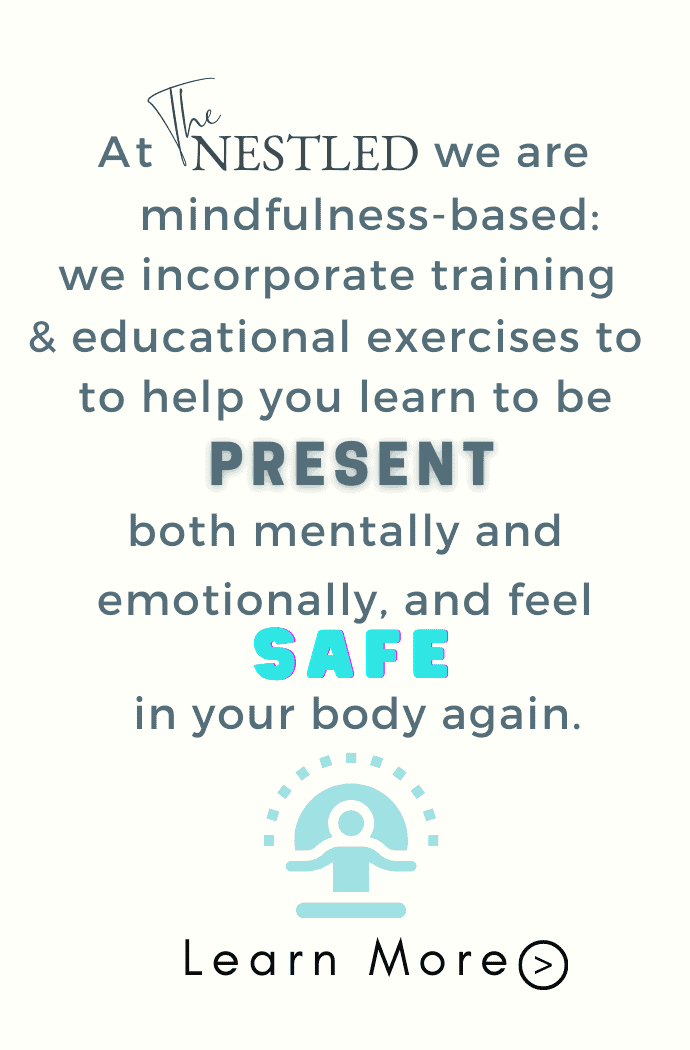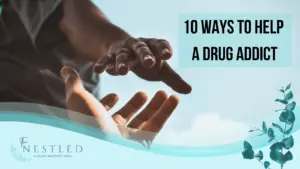Key Takeaway:
- Substance use disorders are a major risk factor for suicide: Individuals with substance use disorders are six times more likely to die by suicide compared to those who do not have a substance use disorder.
- Prevention and treatment strategies can help reduce the risk of suicide in individuals with substance use disorders: Effective prevention strategies include addressing risk factors and promoting protective factors, while treatment options include therapies such as cognitive-behavioral therapy, dialectical behavioral therapy, and motivational interviewing.
- It is essential to understand the connection between substance use disorders and suicide and take action to prevent and address this issue: By increasing awareness, promoting early intervention, and providing effective treatment, we can help reduce the rates of suicide among individuals with substance use disorders.
Do you know the risks associated with substance use disorder and suicide? You should know that there is a strong relationship between the two. Developing an understanding of the connection between SUDs and suicide can help you identify warning signs and prevent tragedy.
Substance Use Disorders: Understanding the Basics
Substance use disorders have become a critical issue in society today, affecting millions of people globally. Understanding the basics of substance use disorders can help identify those at risk and prevent the negative impact it has on individuals and society as a whole.
In this section, let me take you through what substance use disorders are, how it affects people, and how to identify the risk factors associated with it. By gaining this knowledge, we can take necessary steps to prevent and even overcome substance use disorders.
What are Substance Use Disorders?
Substance Use Disorders are a group of conditions wherein an individual continues to use substances despite experiencing negative consequences from doing so. These disorders affect the brain and cause changes in its chemistry, leading to strong cravings for the substance and difficulty in controlling their use.
Substance abuse works by disrupting the normal functioning of the brain’s reward system. Normally, pleasurable activities like eating or socializing cause a release of dopamine – a neurotransmitter responsible for feelings of pleasure and reward. However, substance abuse causes the brain to release much larger amounts of dopamine than any natural activity would. This leads to a “high” that becomes increasingly difficult to replicate without continuing substance use.
Substance Use Disorders can arise due to various factors such as genetics, environmental influences, trauma, mental health issues, or a combination of these factors. Interestingly, research has shown that certain genes may make individuals more susceptible to developing Substance Use Disorders.
Did you know that Substance Use Disorders are also referred to as addiction or dependency? While these terms are not interchangeable medically, they are often used colloquially.
According to the National Institute on Drug Abuse (NIDA), addiction is defined as a chronic disease characterized by drug seeking and use despite harmful consequences. Research suggests that up to half of individuals with Substance Use Disorders also have a co-occurring mental illness.
Identifying Risk Factors for Substance Use Disorders
Identifying risk factors for substance use disorders is a crucial step in understanding how to prevent and treat addiction. It involves looking at various individual, environmental, and societal factors that contribute to the development of substance abuse. Some of these factors include genetics, trauma, poverty, peer pressure, availability of drugs, and mental health issues.
Identifying risk factors begins with understanding the complex interplay between these various factors. For example, genetics can predispose an individual towards addiction but may not necessarily result in addiction without environmental triggers like exposure to drugs or stressful life events. Similarly, poverty and a lack of access to resources can contribute to substance abuse as a way to cope with stressors.
Identifying risk factors for substance use disorders requires valuable and rare information that can only be gathered through extensive research and observation. It involves analyzing data on demographic trends, social and economic conditions in different geographic locations, clinical studies on treatment outcomes for those with addiction disorders, and research into the underlying neurobiological mechanisms that contribute to addiction.
If left unchecked, the consequences of substance abuse can be dire – affecting not only individuals but entire communities. Therefore it is imperative that we understand the risk factors associated with addiction so we can take timely action to prevent it from happening. If you’re worried about yourself or someone you know who may be exhibiting signs of addiction, seek help right away.
Are you at risk for developing a substance use disorder? Don’t wait until it’s too late – learn about the warning signs and take steps now to prevent addiction from taking over your life. In the next section we will explore The Relationship Between Substance Use Disorders and Suicide – something that affects far too many people around us.
The Relationship Between Substance Use Disorders and Suicide
In this part of the article, we’ll explore the connections between substance use disorders and suicide, focusing on two significant sub-sections.
- Firstly, we’ll delve into the prevalence of suicide in those with substance use disorders, backed by relevant statistics and research. This will provide us with a better understanding of just how serious this issue is.
- Secondly, we will examine the risk factors that may cause suicide in those with substance use disorders, highlighting the breadth and depth of the issue.
Understanding the Prevalence of Suicide in Substance Use Disorders
Many people are not aware of the prevalence of suicide in substance use disorders. Substance abuse and addiction can increase the risk of suicidal ideation and suicide attempts. Understanding the connection between these two issues is important in order to prevent tragedies.
Substance use disorders can have a negative impact on mental health, leading to depression, anxiety, and other conditions that increase the risk of suicide. Additionally, drugs and alcohol can impair judgement and increase impulsiveness, leading to rash decisions that may include self-harm or suicide.
Studies have shown that individuals with substance use disorders are at higher risk for suicidal behaviors than those without such disorders. In fact, one study found that up to 45% of individuals in treatment for substance abuse reported a history of suicidal thoughts or attempts.
Furthermore, substance use disorders may contribute to feeling hopeless and helpless about recovery, adding to an increased sense of desperation regarding life as a whole. It is crucial that individuals struggling with addiction receive appropriate treatment for their substance use disorder alongside any co-occurring mental health conditions.
A recent report from the National Institute on Drug Abuse highlighted that drug overdose deaths involving synthetic opioids increased by 38.4% from 2019 to 2020 alone (1). This stark reality only emphasizes the urgency for a better understanding surrounding how exactly mental health factors into substances misuse.
It’s no secret that dealing with addictions can be overwhelming but understanding the link between substance abuse and suicide is integral when it comes to seeking help. Now let’s delve deeper into Risk Factors That May Cause Suicide in Substance Use Disorders.
Risk Factors That May Cause Suicide in Substance Use Disorders
Risk Factors That May Cause Suicide in Substance Use Disorders are numerous and complex. Substance use disorders can have a severe impact on a person’s mental health, leading to feelings of hopelessness and despair that may lead to suicide. The coexistence of substance abuse disorders and suicidal tendencies is quite common, which highlights the need for focused research and treatment options.
Substance use exacerbates suicidal tendencies because drug addiction can cause disruptions in the brain’s chemicals that regulate mood and emotions. Street drugs like cocaine, amphetamines, or even prescription medication can have negative side effects that can cause an addict to develop depression, anxiety, or other mental illnesses contributing to the emergence of suicidal thoughts.
Depression is one psychological factor that plays a key role in increased risk among those who battle with substance dependency. Mood-enhancing substances’ short-term side benefits do not outweigh their long-term consequences; the ‘come down’ stage associated with this dependency leads to extreme lows which exponentially heightens depressive episodes leading towards acute hopelessness resulting in self-destructive tendencies.
Research shows that mental health disorders such as bipolar disorder can be exacerbated by the use of substances leading to eventual suicidal ideation. This highlights how important it is for people with coexisting conditions to receive comprehensive care specifically catering towards their respective circumstances.
One way to help alleviate these risks involves implementing sustained social support networks inclusive of family and friends alongside psychiatric facilities programs designed with specific interventions tailored towards helping affected individuals cope with depressive periods marked by dangerous ideations. Such interactions somehow shift focus away from individual destructive behavior towards an intentional period of structured behavioral change geared at mitigating further harm across time.
So, if you feel like you are struggling with substance abuse disorder, there are some things you should try before considering ending your life. Reach out for help, talk to someone about your problems, get educated about what you’re going through so that you don’t give up on yourself too easily! This topic provides insight into ‘Strategies for Preventing and Treating Substance Use Disorders‘ tailored at enhancing personal growth in improving one’s psychological wellbeing.
Strategies for Preventing and Treating Substance Use Disorders
Addiction is like quicksand; the harder you try to get out of it, the further you fall into it. In this part of our journey, we’ll explore some strategies that can help prevent and treat substance use disorders. These strategies have been carefully researched and proven effective in addressing addiction.
We’ll first talk about effective prevention strategies that help individuals stay clear of developing addiction in the first place. We’ll then shift the discussion towards the various treatment options available for those who are already struggling with substance use disorders.
Preventing Substance Use Disorders: Effective Prevention Strategies
Preventing Substance Use Disorders: Effective Prevention Strategies are essential to keep individuals from getting addicted to drugs or alcohol. It is a proven method that works on the principle of early intervention and education. By educating young people about the dangers of substance abuse, they can make better choices before it becomes a problem.
Effective Prevention Strategies work by addressing risk factors such as family history of addiction, trauma or stress, and mental health issues. The strategies aim to build resilience in individuals by providing them with coping skills, social support networks, and healthy alternatives to drug use. This approach focuses on strengthening protective factors that reduce the likelihood of developing a substance use disorder.
Effective Prevention Strategies also target environmental factors that can influence drug use, such as peer pressure and advertising. By creating supportive communities and promoting positive social norms around drug-free living, prevention programs aim to reduce the prevalence of underage drinking and drug use.
Research has shown that effective prevention programs can reduce the number of young people who engage in harmful substance abuse behaviors by up to 50%. These programs have been successful in various settings including schools, families, and communities.
We cannot afford to ignore Preventing Substance Use Disorders: Effective Prevention Strategies. Failure to act puts young people at greater risk of drug addiction and ultimately suicide. Don’t wait until it becomes a problem; educate yourself today and take action in your community.
Don’t let drug addiction control your life or that of someone you love! Stay tuned for ‘Treatment Options for Substance Use Disorders’ – we cannot miss this crucial information on how to fight back against addiction!
Treatment Options for Substance Use Disorders
When it comes to treating substance use disorders, there are several options available to individuals seeking help. Treatment options for substance use disorders involve a combination of medications, therapy, and behavioral interventions that work to address addiction at the root cause.
One approach to treating substance use disorders is medication-assisted treatment (MAT). MAT works by combining the use of medication with counseling and behavioral therapies. The medications used in MAT work to help individuals manage withdrawal symptoms and reduce drug cravings, making it easier to stay clean and sober.
Another option for treating substance use disorders is cognitive-behavioral therapy (CBT). CBT helps individuals identify negative thought patterns and behaviors related to their addiction and provides them with strategies for managing these thoughts and behaviors. In addition, CBT can teach individuals how to cope with triggers that may lead them down the path towards using drugs or alcohol again.
An increasingly popular approach to treating addiction is holistic therapy. Holistic therapy takes into account an individual’s overall health and wellbeing, addressing physical health issues as well as mental and emotional health concerns. This approach uses alternative therapies like acupuncture, yoga, meditation, massage therapy, nutrition counseling, and more to provide a comprehensive care plan that treats the whole person.
For those struggling with co-occurring mental health disorders alongside substance use disorder, dual diagnosis treatment may be necessary. Dual diagnosis treatment involves identifying and addressing both conditions simultaneously through a combination of tailored therapies.
If you’re looking for ways to kick your addiction for good, consider talking with a healthcare provider about which treatment options are right for you. Some common suggestions include attending support groups such as Alcoholics Anonymous (AA) or Narcotics Anonymous (NA), spending time outdoors in nature or with friends who don’t engage in substance abuse activities, practicing mindfulness meditation or deep breathing exercises regularly.
Next up: Ready for some insight into the correlation between addiction and suicide? Here’s what you need to know about interventions for addressing suicide in substance use disorders.
Interventions for Addressing Suicide in Substance Use Disorders
In this part of the article, we will be focusing on interventions that can help address the connection between substance use disorders and suicide. We will explore three different approaches: cognitive-behavioral therapy (CBT), dialectical behavioral therapy (DBT), and motivational interviewing (MI). Each of these interventions has unique benefits that can help those struggling with suicide and substance use disorders in different ways. So let’s dive in to understand how these interventions can potentially save a life.
Cognitive Behavioral Therapy (CBT) for Substance Use Disorders and Suicide
Cognitive Behavioral Therapy (CBT) is an effective intervention for addressing substance use disorders and suicide. CBT is a psychotherapeutic approach that helps individuals to identify negative thinking patterns and behaviors and teaches them how to change those patterns. Through this therapy, patients are encouraged to think about their thoughts and feelings in a more balanced way, which can lead to better coping skills and improved self-esteem.
The reasons behind CBT’s efficacy lie in its structured nature, where the therapist guides the patient through a range of cognitive-behavioral strategies. These strategies help the patient understand their emotions as well as develop coping mechanisms that allow them to manage their substance use disorder and suicidal tendencies effectively. Some of these strategies include problem-solving techniques, stress reduction methods, behavior modification, cognitive restructuring, and relaxation training.
One interesting fact about CBT is that it has been proven effective not only for treating substance use disorders but also for treating other mental health conditions such as anxiety or depression; this highlights its broad-ranging applications in the field of mental health care.
Exploring the Benefits of Dialectical Behavioral Therapy (DBT)
Exploring the Benefits of Dialectical Behavioral Therapy (DBT)
Dialectical Behavioral Therapy (DBT) is a promising psychotherapy that addresses complex mental health conditions, including suicidal ideation and substance use disorders. This therapy has been gaining recognition due to its effectiveness in helping people regulate their emotions, improve communication skills, and develop coping strategies. DBT is designed to empower individuals to handle stressful situations, tolerate discomfort, and maintain long-term change.
DBT combines behavioral techniques and mindfulness practices to address the root causes of suicidality and addiction. The practice of mindfulness helps individuals become more aware of their thoughts and feelings without judgment, leading to an increase in emotional regulation capabilities. On the other hand, behavior modification techniques help clients identify and replace harmful behaviors with healthier ones.
Research studies show that DBT positively affects interpersonal relationships, quality of life, and significantly reduces suicidal ideation among individuals struggling with mental illness or substance use disorders. Furthermore, DBT’s flexibility allows it to be modified to suit individual needs.
Due to its success rate in treating a wide range of psychological issues such as borderline personality disorder (BPD), depression & anxiety disorders; this is the high time for people struggling with these issues should reach out for professional help from experienced therapists who leverage the power of DBT technique- before it’s too late.
I urge you not to ignore the possibility that things can get better because you deserve to live a fulfilling life where you are in control. In our next segment boasting a similar level of importance we will explore how Motivational Interviewing (MI) plays a critical role in mitigating substance abuse disorders while keeping suicide at bay!
The Role of Motivational Interviewing (MI) in the Treatment of Substance Use Disorders and Suicide
Motivational Interviewing (MI) is a type of counseling technique that can play a vital role in the treatment of substance use disorders and suicide. By utilizing this method, trained professionals work with individuals to help them find the internal motivation necessary to overcome problems related to addiction and suicidal ideation. The approach is collaborative, non-judgmental, and encourages the individual to take responsibility for their own behaviors using open-ended questions, reflective listening skills and other techniques that support change.
The main objective of MI is to evoke an internal desire for change by exploring the individual’s resistance to it. Professionals work with the individual rather than dictate what they should do or how they should behave. Research shows that for those who struggle with mental health or substance use disorders, a deep understanding of their conditions and providing proper support can lead to successful outcomes in healing. This approach aims at helping individuals move beyond conflicted and confusing feelings about their circumstances towards more positive choices that will help address their problems.
Motivational Interviewing is effective in treating substance use disorders because it helps people develop a sense of self-worth and empowers individuals to take control over their lives. It also provides them with techniques they need to manage triggers, build healthy coping mechanisms, and maintain sobriety long-term. By contrast, when treating suicidal ideation topics or behaviors through MI it attempts to understand issues related to planning, methods used, reasons behind the behavior itself, etc. – primarily trying to empower patients towards leading a better life.
Experts suggest several useful ideas for those who may benefit from motivational interviewing-style support as part of substance use disorder treatment or suicide prevention programs:
- Focus on increasing personal self-care like exercise routines
- Engage in meaningful activities such as volunteerism or hobbies
- Practice grounding techniques such as meditation breathing exercises
- Reduce stress by practicing mindfulness techniques
- Reach out for social support by attending recovery meetings regularly
After working through ways of empowering individuals with behavioral needs, one could gain valuable insights about the complex nature of different disorders – a sense of understanding and empathy comes through working with people on this level. Empathy helps professionals understand that recovery is not just about sobriety or cessation of suicidal tendencies, but rather a holistic approach towards positive life changes that benefit patients beyond their diagnosis itself.
“The gentle art of MI,” as some call it, helps individuals who are struggling with substance use disorders, suicidal tendencies or both, take control over their life through the lens of someone who wishes to help them see what it means to live outside those struggles. MI’s approach aims to provide long-lasting emotional benefits and can be used as an ongoing tool for changing one’s habits and to empower individuals to make healthy, proactive decisions that are conducive towards a path of healing.
The Importance of Understanding the Connection Between Substance Use Disorders and Suicide
Understanding the connection between substance use disorders and suicide is crucial because it can potentially save lives. When an individual struggles with a substance use disorder, it often leads to a sense of hopelessness and despair that can increase the risk of suicidal ideation or attempts. It’s important to note that not everyone who struggles with substance misuse will develop suicidal tendencies, but the risk is much higher than in those who don’t.
The connection between substance use disorders and suicide occurs through several mechanisms. Firstly, certain substances like opioids or alcohol may cause changes in brain chemistry that lead to depression and suicidal thoughts. Secondly, people with substance use disorders may experience negative consequences such as financial or relationship problems that trigger feelings of hopelessness and contribute to suicidal behavior. Lastly, social isolation and stigma associated with addiction may exacerbate emotional distress for individuals struggling with these issues.
It’s crucial to understand this connection in order to provide effective treatment for those dealing with both conditions. Evidence-based interventions like cognitive-behavioral therapy, medication-assisted treatment, and peer support groups have shown significant promise in helping individuals manage substance misuse and decrease their risk of suicide.
Research has shown that men are more likely than women to die by suicide while women are more likely to attempt it. Additionally, rates of suicide are higher among certain populations such as veterans, and people experiencing homelessness or poverty.
If you or someone you know is struggling with substance misuse or experiencing thoughts of self-harm, please seek help immediately. Remember that you are not alone, and there are resources available to support you. Let’s explore some strategies for prevention and treatment of substance use disorders.
Available Prevention and Treatment Strategies for Substance Use Disorders
Available prevention and treatment strategies for substance use disorders refer to the various options individuals struggling with substance abuse can utilize to overcome their addiction. Substance use disorders are a complex problem that requires personalized treatment guided by trained professionals. Treatment usually involves individualized plans that address each person’s unique circumstances.
Available prevention and treatment strategies for substance use disorders include:
- Medication-assisted treatment (MAT)
- Cognitive-behavioral therapy
- Contingency management
- Motivational interviewing
- Therapy targeted towards dual-diagnosis patients
MAT has been shown to reduce opioid dependence by 60 percent with medication, while cognitive-behavioral therapy addresses negative patterns of thinking and behavior. The success of these treatments is often attributed to the individualized approach taken, which accounts for differing needs among those with substance use disorders.
It is important to note that prevention tactics such as educating youth on the dangers of drug uptake can ultimately prevent future substance use disorder cases. Early detection is also critical in successful treatment outcomes; recognizing early signs of addiction in oneself or loved ones can lead to timely interventions which are better than dealing with full-blown addiction problems. Creating support groups specific to drug problems can ease what often feels like an isolating experience.
A true fact about available prevention and treatment strategies for substance use disorders is the effectiveness of contingency management (CM) as a useful intervention in treating cocaine abuse disorder. Researches have consistently shown that clients who participated in CM administration programs had higher rates of abstinence from cocaine compared to those who did not receive it (Lussier et al., 2006). Contingency management uses positive reinforcement such as giving rewards like gift cards or vouchers when a patient displays positive behavior, reinforcing healthy actions over harmful habits.
Find Hope At The Nestled
At The Nestled, a leading addiction treatment center in Las Vegas, we recognize the gravity of the connection between substance use disorders and suicide. Our compassionate and highly trained team is dedicated to providing comprehensive care and support to individuals struggling with these intertwined challenges. Through evidence-based therapies, personalized treatment plans, and a nurturing environment, we aim to empower our clients on their journey to recovery, restoring hope, and fostering resilience. If you or a loved one is seeking help, reach out to The Nestled today and take the first step towards a brighter, healthier future.
Five Facts About the Connection Between Substance Use Disorders and Suicide:
- ✅ Substance use disorders are a major risk factor for suicide. (Source: National Institute on Drug Abuse)
- ✅ Approximately one-third to half of people who die by suicide have a substance use disorder. (Source: American Journal of Psychiatry)
- ✅ Opioid use, particularly non-medical use, is associated with increased risk of suicidal thoughts and behaviors. (Source: Substance Abuse and Mental Health Services Administration)
- ✅ Substance use disorders and mental health disorders often co-occur, leading to greater risk for suicide. (Source: American Association of Suicidology)
- ✅ Substance use disorder treatment can significantly reduce suicide risk. (Source: National Action Alliance for Suicide Prevention)
FAQs about The Connection Between Substance Use Disorders And Suicide: What You Need To Know
What is the connection between substance use disorders and suicide?
There is a strong link between substance use disorders and suicide. Research has shown that individuals with substance use disorders are at a much higher risk of attempting or completing suicide than those without.
Why are individuals with substance use disorders more likely to attempt or complete suicide?
There are several factors that contribute to this increased risk, including increased impulsivity and emotional dysregulation, as well as the fact that substance use can exacerbate underlying mental health conditions that contribute to suicide risk.
What can be done to prevent suicide in individuals with substance use disorders?
Early identification and treatment of substance use disorders is key in reducing the risk of suicide. In addition, addressing any underlying mental health conditions and providing comprehensive support and resources can also be effective in reducing suicide risk.
Are there specific substances that are more strongly linked to suicide risk?
Yes, research has shown that alcohol, opioids, and benzodiazepines (a class of drugs commonly used to treat anxiety) are particularly linked to suicide risk.
What are the warning signs of suicide risk in individuals with substance use disorders?
Warning signs include talking about suicide, expressing feelings of hopelessness or worthlessness, sudden changes in mood or behavior, giving away possessions, and experiencing a sense of overwhelming despair or emptiness.
If I am struggling with a substance use disorder and suicidal thoughts, what should I do?
It is important to seek help immediately if you are struggling with a substance use disorder and suicidal thoughts. Contact a mental health professional or crisis hotline for support and assistance.








